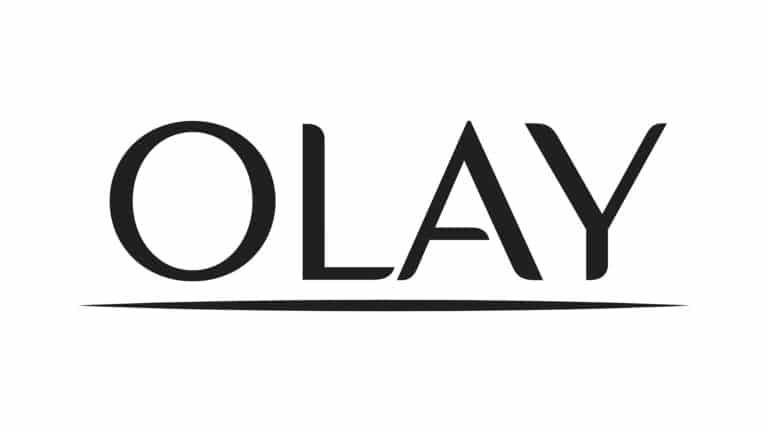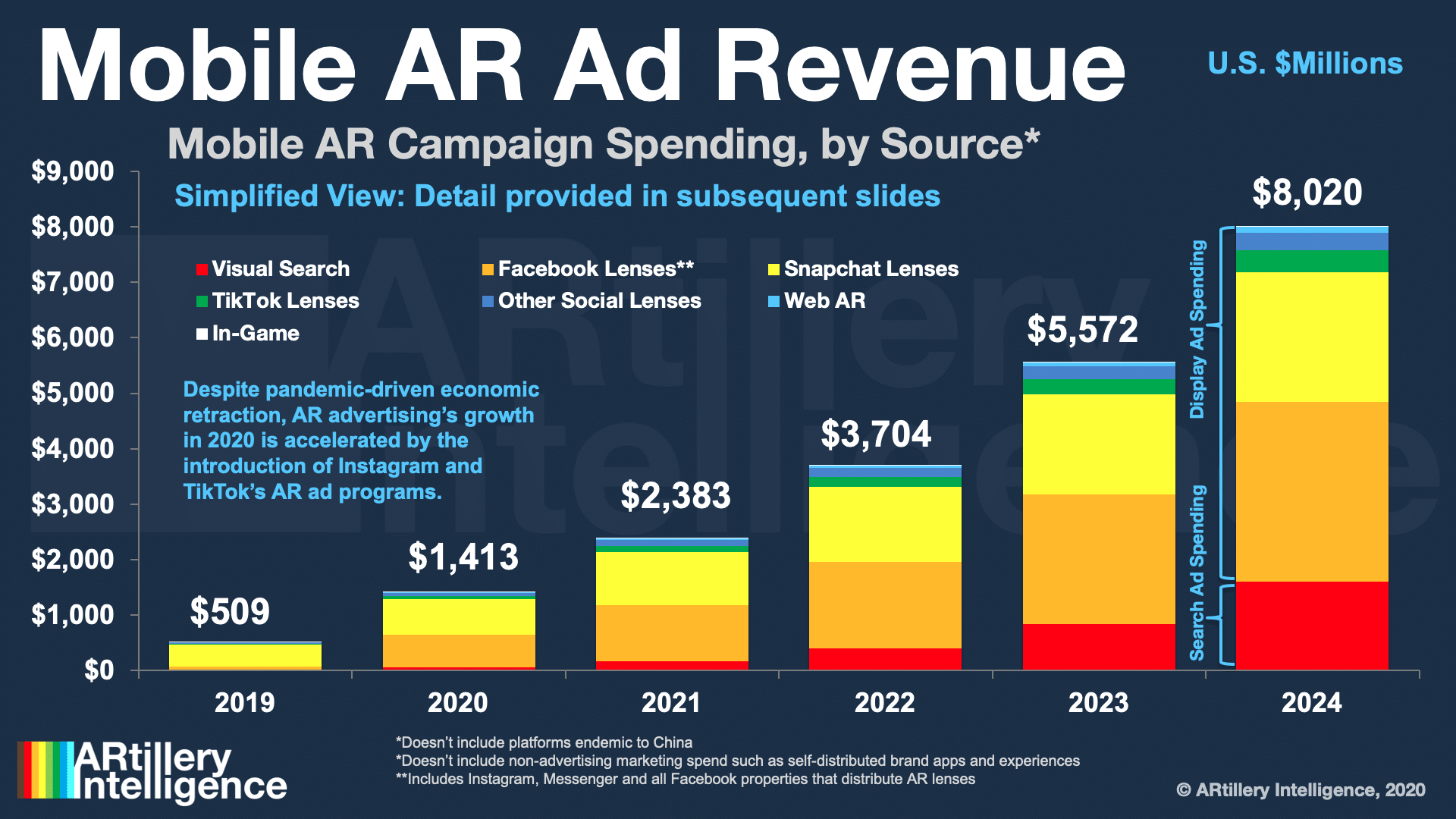
AR continues to evolve and take shape as an industry. Prominent sectors include industrial AR, social, gaming, and shopping. But existing alongside them is AR advertising. This includes paid/sponsored AR lenses that let consumers visualize products on “spaces & faces.”
Advertising is one of the most lucrative AR subsectors, estimated to reach $1.41 billion last year and $8.02 billion by 2024. These figures measure the money spent on sponsored AR experiences with paid distribution on networks like Facebook and Snapchat.
As our research arm ARtillery Intelligence examined in a recent report on AR advertising, adoption drivers include brand advertisers’ growing affinity for AR. Its ability to demonstrate products in 3D resonates with their creative sensibilities, transcending common 2D formats.
To continue the narrative and “show rather than tell,” part II of that report features case studies that map to various stages of the consumer purchase funnel. What do AR ads look like today, what’s the concrete ROI, and what are strategic takeaways for campaign execution?

Measurable Outcome
After case studies that focused on upper and mid-funnel, we now continue to the lower funnel. These campaigns drive quantifiable consumer purchases through AR product visualization. This usually involves AR experiences that are integrated into a shopping and transactional flow.
More evidence from the lower-funnel side of AR commerce comes from Olay. As examined in our MAC case study, cosmetics is a fitting category for AR. The same applies to Olay’s Facebook AR campaign, though it differs in its AR interactions as well as its lower-funnel goals and results.
The Blippar-powered campaign let users take a selfie which then applied computer vision and AI to analyze “skin age” and recommend products to reduce it. This is a more rudimentary form of AR than others developing today, but it nonetheless has the key ingredient of computer vision.
The result was an immediate 2x boost in conversions. This happened at meaningful volume, given 7,000 daily app users and 1.2 million cumulative engagements. It also led to five-minute session lengths and boosted engagement among younger demographics that Olay wanted to target.
Representative Indicators
Session length is a particularly notable metric that continues to come up in our case studies. In a sea of vanity metrics like app downloads, it’s important for AR to stick to more granular and representative indicators of actual engagement. Measurements like dwell time can capture that.
But the holy grail is revenue lift, which was also present in the Olay campaign. Though it will take a while for AR to standardize in terms of recognized and native metrics that capture its unique engagement, revenue lift is a universally understood and valued metric. Money talks, as they say.
A few other campaign attributes are worth noting. As mentioned, this campaign used a rudimentary form of AR, which shows that successful implementations don’t have to be technologically complex. It’s more about engaging consumers through memorable experiences.
Capabilities will only grow as both the technology improves (facial tracking, realistic product renderings, easier onboarding) and as consumer comfort levels likewise advance. These two factors together could propel a virtuous cycle of supply and demand for AR visualization.

